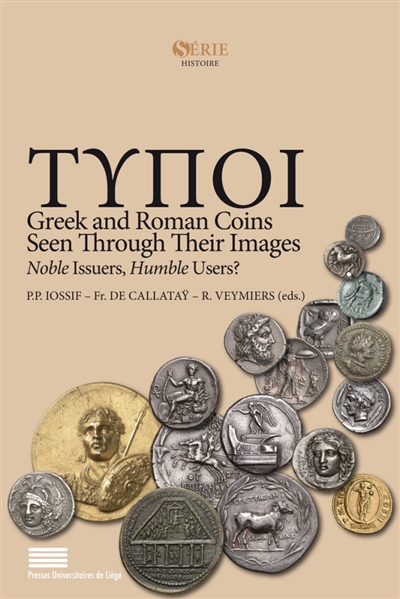en savoir plus

Carte fidélité
Permet à tous ses détenteurs d'obtenir 5% de réduction sur tous les livres lors du retrait en magasin (réduction non cumulable avec les réductions de type étudiant).
Offre également un certain nombre d'avantages auprès de nos partenaires.
Wishlist
Avec les favoris, retrouvez dans un espace les sélections effectuées au fur et à mesure de vos navigations dans le site.
Constituez pour votre usage personnel vos listes de livres en prévisions d'achats futurs et votre sélection d'articles, dossiers, événements, vidéos ou podcasts préférés ou à découvrir plus tard...
Il suffit simplement de cliquer sur "Ajout Favori" sur chaque page qui vous intéresse pour les retrouver ensuite dans votre espace personnel.
Requiert un compte Mollat
Mes Alertes
Requiert un compte Mollat
Tupoi : Greek and Romans coins seen through their images, noble issuers, humble users ? : proceedings of the International conference
en savoir plus
Résumé
Les contributions portent sur l'iconographie des pièces de monnaie utilisées pendant l'Antiquité gréco-romaine. ©Electre 2025
Lire la Quatrième de couverture
Réduire la Quatrième de couverture
Since the 16th c. numerous studies have been consecrated to the images depicted on Greek and Roman coins. Most of them are concerned with the identification of numismatic types. In contrast, rare are those asking questions about the possible mechanisms preceding the choice of types by an authority and their reception(s) by different audiences. The present book brings together various approaches on visual culture from different fields (working on different areas, periods, or specializing in media other than coins) proposing an original methodological synthesis of what has been done or has still to be done in numismatic iconography.
More precisely, this book explores the relation between « issuer » and « user » by addressing various points. Were numismatic types chosen and adapted for particular audiences ? If so, then how is it that the iconography, bearing a religious character in most of the cases, does not correspond to those we imagine being the primary beneficiaries, i.e., soldiers and traders ? What is the actual circulation of monetary images ? What are the differences and similarities with respect to the images produced in other media of similar or distant sizes and qualities, gems and seals being similar, vases and sculptures being distant ? To what extend did the issuers draw on media other than coinage for their iconographic ideas ? Could users understand the « message » without the mediation of other media ? In which way did numismatic imagery influence (or was it influenced by) the iconographic types and choices on other media ? Which concepts and tools coming from different fields of research (anthropology for instance) are likely to help our understanding of the type-choice process ? Are numismatic types over-commented by art historians (eager to use the term « propaganda ») and under-commented by economists (more imbued with pragmatism) ? To what extent did the indispensable confidence of the users determine the use of images easily recognizable by them ? Who decides the monetary iconography : the highest authorities or, as in the case of Republican Rome, junior aediles ? Who's responsible for the numismatic type : the coin engraver or the artist creating the original design ? These are some of the questions addressed in this book and answered by leading specialists through new lenses and perspectives focusing on visual culture.
Fiche Technique
Paru le : 28/04/2018
Thématique : Divers
Auteur(s) : Non précisé.
Éditeur(s) :
Presses universitaires de Liège
Collection(s) : Série histoire
Contributeur(s) : Editeur scientifique (ou intellectuel) : Panagiotis P. Iossif - Editeur scientifique (ou intellectuel) : François De Callatay - Editeur scientifique (ou intellectuel) : Richard Veymiers - Organisateur d’un congrès : Ecole belge d'Athènes - Organisateur d’un congrès : Ecole française d'Athènes
Série(s) : Non précisé.
ISBN : 978-2-87562-157-3
EAN13 : 9782875621573
Reliure : Broché
Pages : 526
Hauteur: 24.0 cm / Largeur 17.0 cm
Épaisseur: 3.9 cm
Poids: 1169 g
